What is Powder Coating? A CNC Machining Surface Finishing Method
Powder coating is a popular surface finishing process for CNC machined parts that enhances durability and aesthetics. This article explores the types, process, applications, and benefits of powder coating for precision parts.
Powder coating is a dry finishing technique applied to CNC machined metal parts and components. This process involves the electrostatic application of powdered paint, which is then cured in an oven. The result is a smooth, durable finish resistant to scratches, corrosion, and fading. Powder coating is preferred for parts that require high-performance durability and aesthetic quality.
Now, let’s explore the step-by-step process of powder coating and discover its diverse types, finishes, and application techniques for CNC machined parts.
What is Powder Coating?
Powder coating is a surface finishing technique used to apply a protective and aesthetic layer of finely ground powder to the surface of CNC machined parts, including powder coating aluminum and powder coated steel. Unlike traditional liquid coatings, powder coating does not use solvents, which makes it more environmentally friendly and efficient. The powder is charged electrostatically and sprayed onto the surface before being heated in an oven to fuse the coating, creating a smooth, hard finish. This technique provides superior durability and resistance to wear and corrosion, making it ideal for both aluminum and steel surfaces in a variety of industries.
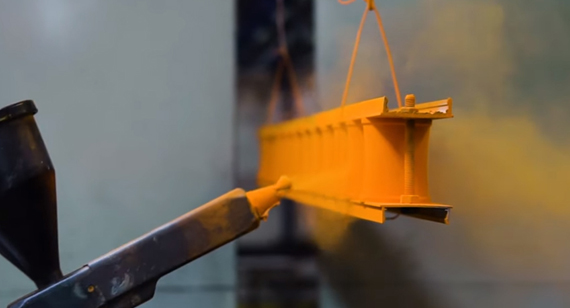
Note: you want to know more about the surface treatment technology of CNC machining, you can read the following articles:
Surface Treatment Methods In CNC Machining
Principles and Applications of Sandblasting
What Is Polishing And Types Of The Polishing
More Resources: Powder coating (From Wikipedia)
What is Powder Coating Paint?
Powder coating is a dry finishing technique that involves applying a fine powder to a surface, typically metal, through an electrostatic charge. This process allows the charged powder to adhere securely to the surface. Subsequently, the coated item is placed in a heating oven where the powder is cured, resulting in a hard, smooth, and resilient finish. In contrast to conventional liquid paint, powder coating does not necessitate the use of solvents. This method is frequently utilized in industrial settings, owing to its durability and strong resistance to scratching, chipping, and fading.
How to Start Powder Coating?
To begin powder coating, a few important steps must be followed to ensure a clean and durable finish for CNC machined parts. The process typically includes preparation, application, and curing stages.
Surface Preparation:
Before applying powder coating, the CNC machined parts must undergo thorough cleaning to ensure that no contaminants, oils, or dirt are left on the surface. This is crucial because any impurities on the part can cause the powder to not adhere properly, leading to defects in the final finish. Cleaning methods typically include:
Abrasive blasting (sandblasting): This removes contaminants and smooths the surface.
Chemical cleaning: Solvents or alkaline cleaners are used to degrease the parts.
Rinsing and drying: After cleaning, parts are rinsed with water and dried to ensure no moisture remains.
Application of Powder:
Once the surface is clean and dry, the powder coating process begins. The coating itself is a fine, dry powder that is applied to the part using an electrostatic spray gun.
Curing and Bonding:
After the powder coating has been applied, the part needs to be cured to set the powder. This is done by placing the part in a curing oven. The curing process involves:
Heating the part: The oven temperature typically ranges between 160-200°C (320-400°F), depending on the type of powder used. The heat causes the powder particles to melt and fuse together, forming a continuous and durable finish on the part.
Curing time: The curing process usually takes between 10-20 minutes, depending on the part size and thickness of the coating. This allows the powder to fully bond with the substrate, ensuring a tough, resilient, and smooth finish.
Cooling down: After curing, the part is removed from the oven and allowed to cool down to room temperature, solidifying the powder coating.
Inspection and Quality Control: After cooling, the powder coated parts are inspected for defects. Common issues include uneven coating, air bubbles, or imperfections such as “orange peel” (a texture that resembles orange skin). If any defects are found, the part may need to be reworked or coated again to achieve the desired finish.
How Thick is a Powder Coat?
The thickness of a powder coat is crucial for durability. Typically, the thickness ranges between 1 to 5 mils (25 to 125 microns), but this can vary depending on the part’s application. For CNC machined metal parts exposed to harsh environments, thicker coatings are used to ensure greater protection against corrosion, abrasion, and environmental degradation.
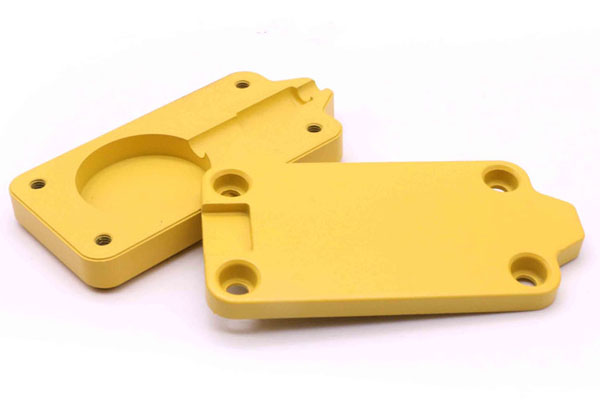
What are the Types of Powder Coating?
There are two primary types of powder coatings: Thermoset Powder Coating and Thermoplastic Powder Coating. Each has its unique properties, making them suitable for different applications depending on the needs of the part being coated. Below is an expanded explanation of each type:
1. Thermoset Powder Coating:
Curing Process: Thermoset powder coatings undergo a chemical reaction when exposed to heat during the curing process. This reaction causes the powder to form cross-links, creating a durable and permanent bond between the powder and the part’s surface.
Durability: Once the curing process is complete, thermoset coatings cannot be re-melted or reshaped. This makes them highly durable and resistant to wear, heat, and harsh chemicals. It is often the preferred choice for applications where the coating needs to withstand high temperatures and harsh environments.
Applications: Thermoset powder coating is commonly used in industries such as automotive manufacturing, appliances, and heavy-duty equipment, where parts must endure rigorous conditions.
Common Finishes: The finishes for thermoset coatings include matte, gloss, and textured finishes, each providing different aesthetics and performance characteristics.
Advantages: This type of powder coating offers exceptional resistance to corrosion, UV light, and weathering, making it ideal for outdoor or industrial use.
2. Thermoplastic Powder Coating:
Reheating and Reshaping: Unlike thermoset powder coatings, thermoplastic coatings can be reheated and reshaped without undergoing any chemical change. When heated, the powder softens, allowing it to be molded or re-coated if necessary.
Flexibility: Thermoplastic powder coatings offer better flexibility and impact resistance compared to thermoset coatings, making them suitable for parts that experience high levels of impact or need to endure repeated flexing.
Applications: This type of coating is commonly used for parts that require frequent handling or exposure to high impacts, such as in the manufacturing of plastic components, outdoor furniture, and electrical enclosures.
Common Finishes: The finishes for thermoplastic powder coatings are typically smooth or textured, depending on the specific application. They also tend to have a higher level of flexibility and elongation.
Advantages: One of the key benefits of thermoplastic coatings is that they can be reworked or repaired. If the coating gets damaged, it can be reheated and re-coated, making it easier to restore the part.
How Does Powder Coating Work?
Powder coating is a multi-step process that begins with cleaning the surface of the CNC machined parts to remove any contaminants, oils, or dust. Once cleaned, an electrostatic charge is applied to fine powder particles, which are then sprayed onto the part using a specialized electrostatic spray gun. The charged powder adheres evenly to the part’s surface, ensuring a uniform coat.
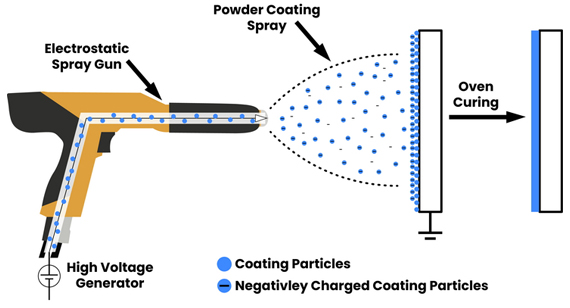
The part is then placed in a curing oven, where the heat causes the powder to melt and bond with the surface, creating a durable, scratch-resistant finish. This curing process forms a hard, smooth layer that offers excellent protection against corrosion, wear, and environmental damage, making it ideal for CNC parts in demanding applications.
What Finishes Are Available for Powder Coating?
There are several finishes available for powder coating, each offering unique visual and functional benefits:
Glossy Finish: A highly reflective and shiny finish commonly used in automotive, consumer products, and decorative items. It enhances the appearance by providing a sleek, polished look and is ideal for applications where a smooth, high-shine surface is desired.
Matte Finish: This finish delivers a smooth, non-reflective surface that minimizes glare, making it suitable for industrial components and CNC machined parts where a subtle, professional look is preferred. It is ideal for environments requiring low-light reflection, such as medical equipment or machinery.
Textured Finish: A rough or patterned surface that adds tactile qualities, enhancing grip or masking surface imperfections. This finish is often used in heavy-duty applications like automotive parts or machinery where increased durability, abrasion resistance, and a functional texture are required.
These finishes not only improve the appearance but also contribute to the part’s performance by enhancing durability, hardness, and wear resistance, making them suitable for diverse applications, including CNC machining and automotive sectors.
What Materials Can Be Powder Coated?
Powder coating can be applied to various materials, but it is most commonly used for CNC machined metal parts like steel, aluminum, and stainless steel. These materials are ideal for powder coating because they provide a strong, durable surface that enhances both the appearance and functionality of the part. Additionally, materials such as zinc, brass, and copper can also be powder-coated, though they require specific formulations for proper adhesion.
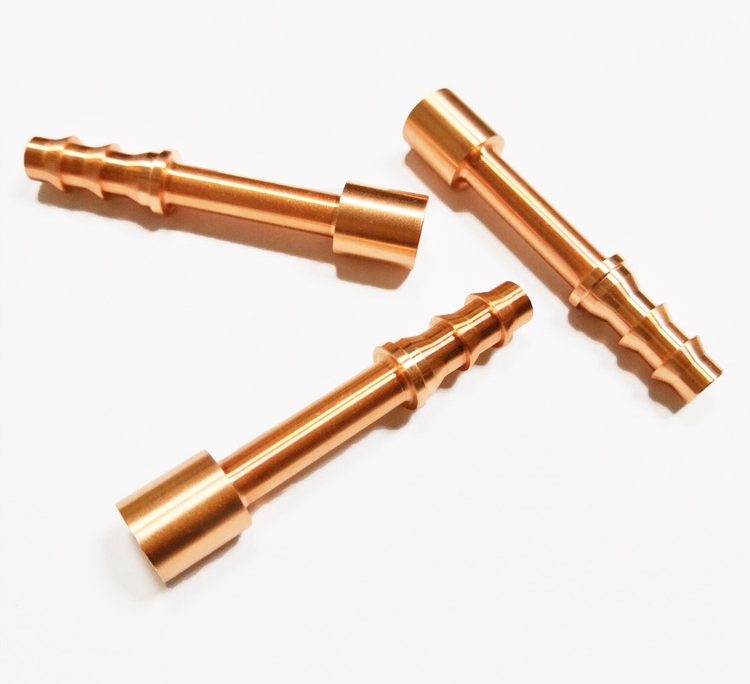
Certain thermoplastic materials, such as PVC and polypropylene, can be powder-coated with specially developed powders that are engineered for these types of substrates. Plastics are not as commonly powder-coated as metals, but when done correctly, they provide a smooth, durable finish suitable for consumer products and automotive parts.
The ability to coat a wide variety of materials makes powder coating a versatile choice for industries such as automotive, industrial equipment, electronics, and consumer products, where durability and aesthetic appeal are crucial. The process significantly enhances the corrosion resistance, abrasion resistance, and overall surface integrity of the treated materials.
When Should You Apply Powder Coating?
Powder coating should be applied to parts that have been fully machined, cleaned, and prepared. It is ideal for parts exposed to harsh environments, such as automotive parts, industrial components, and electronic housings. The coating process provides long-lasting protection against wear, corrosion, and UV degradation, making it suitable for both functional and decorative purposes.
Common Applications of Powder Coating
Powder coating is utilized across many industries due to its versatility, durability, and ability to provide high-quality finishes. Here are some common applications:
Automotive: Powder coating is extensively used in the automotive industry for wheels, bumpers, frames, and other exterior parts. The coating protects these components from scratches, corrosion, and environmental wear while providing a visually appealing finish. It enhances the durability of automotive parts exposed to harsh conditions like UV rays, road salts, and high temperatures.
Medical Equipment: In the medical field, powder coating is applied to medical devices and equipment to ensure cleanliness, corrosion resistance, and durability. This is especially important for devices that come in direct contact with patients or need to withstand repeated sterilization cycles, such as surgical instruments, hospital beds, and diagnostic machines.
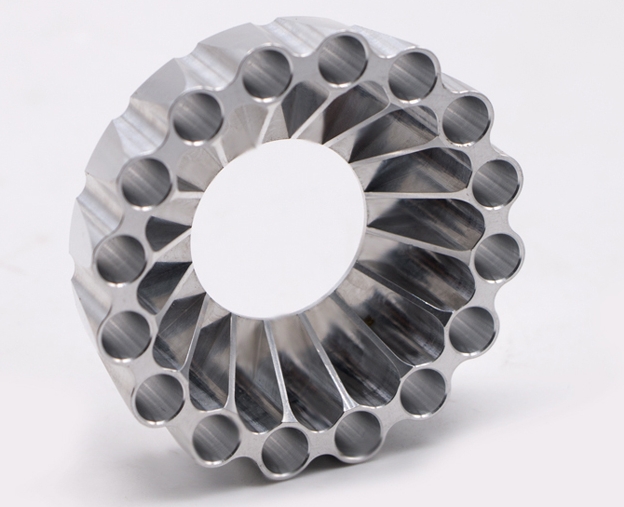
Consumer Goods: Many household appliances, furniture, and electronics benefit from powder coating. The process offers a polished, smooth finish while adding protection against scratches, stains, and wear. Powder coated finishes are commonly found on refrigerators, microwaves, metal furniture, outdoor grills, and electronic casings, where both aesthetic appeal and durability are crucial.
Architectural and Outdoor Products: Powder coating is also widely used for outdoor furniture, fencing, window frames, and architectural elements. The coating provides weather resistance, protecting these items from the effects of rain, snow, and sunlight. Powder coating ensures that these products maintain their color and finish over time despite exposure to outdoor elements.
Industrial Equipment: Industrial machinery and equipment are often powder-coated to enhance their resistance to abrasion, chemicals, and extreme conditions. This application is especially common in construction, mining, and manufacturing industries, where parts need to withstand heavy-duty operations.
What Equipment Do Manufacturers Need for Powder Coating?
To effectively perform powder coating, manufacturers require specialized equipment for each stage of the process to ensure uniformity and high-quality finishes. The key equipment needed includes:
Electrostatic Spray Guns: The most critical tool in the powder coating process, electrostatic spray guns are used to apply a consistent electrostatic charge to the powder particles, allowing them to adhere to the CNC machined parts. The spray gun ensures the even distribution of the powder coating, which is essential for a smooth and uniform finish. Various spray gun models are available, designed for different part sizes and coating needs.
Curing Ovens: After applying the powder, the coated parts are placed in a curing oven, where heat causes the powder to melt and bond to the surface. These ovens must reach specific temperatures, often between 160°C and 200°C (320°F to 400°F), to allow the powder to cure correctly. The curing process ensures that the powder forms a durable, scratch-resistant, and smooth coating. Infrared ovens and convection ovens are commonly used, depending on the production requirements.
Powder Coating Booths: Powder coating booths are essential for controlling the powder application process. These booths are designed to contain the powder particles, preventing them from escaping into the air and reducing waste. They also ensure a consistent, even application across the surface of the part. Some booths are equipped with filter systems to collect excess powder, which can be reused, improving efficiency and minimizing waste.
Pre-Treatment Systems: Pre-treatment equipment is essential for cleaning the CNC machined parts before powder coating. This equipment typically includes washers and drying systems that remove oils, dust, grease, and contaminants from the parts. The cleaning process is critical to ensure that the powder bonds well with the substrate and creates a long-lasting finish.
Drying Ovens: In addition to curing ovens, manufacturers may also use drying ovens for parts that require drying after cleaning or before applying the powder coat. These ovens help remove moisture from the part’s surface, ensuring that the powder adheres properly during the coating stage.
Powder Coating Guns and Accessories: Advanced powder coating guns may come with a range of accessories such as adjustable nozzles, HVLP (high volume low pressure) controls, and pressure regulators to adjust the flow and air pressure, giving the operator more control over the application process. This is especially useful for parts with intricate shapes or small details.
Durability of Powder Coating
Powder coating is highly regarded for its exceptional durability, with a lifespan that can range from 15 to 40 years, depending on factors such as environmental exposure and maintenance practices. This finishing technique provides superior resistance to various forms of damage, including scratches, chips, corrosion, UV degradation, and weathering. As a result, powder-coated surfaces are particularly well-suited for applications exposed to harsh conditions, such as automotive parts, outdoor furniture, and industrial equipment.
The powder coating process involves applying a dry, finely ground powder to the surface, which is then subjected to heat in an oven to fuse the powder into a solid, durable finish. This fusion process results in a smooth, hard surface that is not only visually appealing but also highly resistant to the elements. The finish formed through powder coating is tougher than traditional liquid coatings, offering longer-lasting protection against everyday wear and tear.
Advantages and Disadvantages of Powder Coating
The advantages of powder coating make it an excellent choice for many applications, offering durability, environmental benefits, and a range of finishes. However, powder coating does come with some challenges, particularly for parts with complex shapes, thickness control issues, and curing requirements.
Advantages of Powder Coating:
- Durability: One of the primary advantages of powder coating is its durability. The powder coated surface forms a tough, resilient layer that is highly resistant to chipping, fading, scratching, and corrosion. This makes it ideal for CNC machined parts that are exposed to harsh environmental conditions, such as automotive, industrial, and outdoor equipment, where parts are subject to wear and tear.
- Variety of Finishes: Powder coating offers a wide range of finishes, from glossy to matte, textured, and even metallic. The variety allows manufacturers to meet specific aesthetic and functional needs. Textured and matte finishes can provide additional benefits such as improved grip, reduced glare, and enhanced wear resistance, making them suitable for both decorative and functional parts.
- Efficiency and Cost-Effectiveness: Powder coating is an efficient process that can be applied quickly and evenly. It can cover large surface areas in a short time, reducing production times. Additionally, the process is cost-effective because excess powder can be collected and reused, minimizing waste. The lack of solvents also reduces operational costs associated with disposal and environmental compliance.
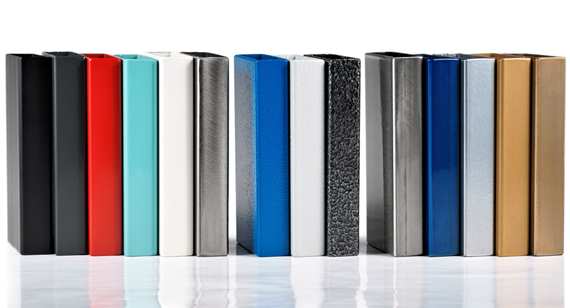
- Enhanced Protection: The powder coating process creates a thick, uniform finish that offers excellent protection against environmental elements like moisture, UV rays, and chemicals. This makes it a preferred choice for outdoor products such as fences, furniture, and machinery, where prolonged exposure to the elements can cause corrosion and degradation.
Disadvantages of Powder Coating:
- Complex Geometry: While powder coating is highly versatile, it can be challenging to apply to parts with intricate or complex geometries. The process of applying the powder evenly to components with deep recesses, small holes, or fine details often requires advanced techniques, such as manual touch-ups or specialized equipment like fluidized beds. This can add complexity and cost to the powder coating process.
- Thickness Control: Achieving a consistent and uniform powder coating thickness across parts can be difficult, particularly for large or irregularly shaped components. Over- or under-coating can result in poor finishes, reduced protection, or unsatisfactory aesthetics. To maintain consistency, manufacturers must carefully monitor the process and ensure that the part is uniformly coated, which may require special equipment or expertise.
- Curing Challenges: The curing stage of the powder coating process requires precise temperature control to ensure that the powder melts properly and bonds to the substrate. Uneven heating or incorrect curing time can lead to inconsistent results, such as a soft finish, or in extreme cases, the coating may not fully adhere to the part. Ensuring the proper cure for large parts or complex shapes can be a logistical challenge.
- Initial Setup Costs: While powder coating can be cost-effective in the long term, the initial setup costs for the required equipment—such as spray booths, curing ovens, and powder recovery systems—can be high. For smaller operations or businesses just starting, these upfront investments can be a barrier, especially if the volume of parts to be coated is low.
- Limited Color Options for Small Batches: While powder coating finishes offer a wide variety of colors, it can be less flexible when compared to liquid paints for small batches or custom colors. Large-scale production runs often have more color options and faster lead times, while small orders may require waiting for specific powder colors or mixed batches.
VMT’s High-Quality CNC Machining Surface Treatment Services
At VMT, we offer expert CNC machining services combined with top-tier powder coating treatments. Our experienced engineers ensure that every CNC machined part is perfectly prepared, coated, and finished to meet the highest standards of durability and appearance. Whether you need rapid prototyping or mass production, VMT is your partner in delivering high-quality, precision-finished components.
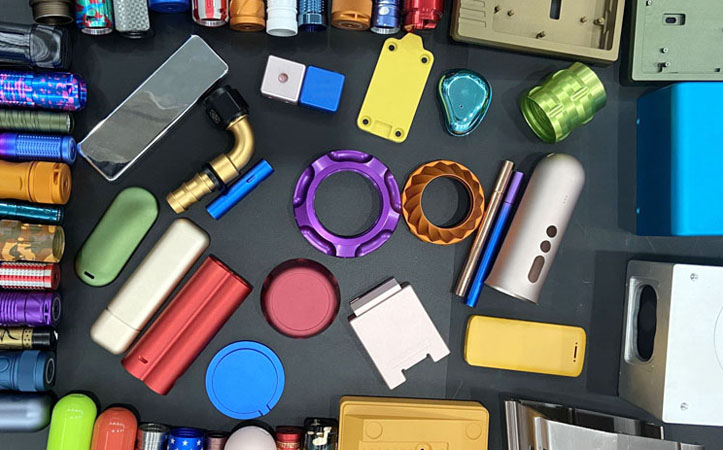
In Conclusion
Powder coating is an effective, eco-friendly finishing process for enhancing the appearance and durability of CNC machined parts. Its versatility in materials, finishes, and applications makes it a top choice for industries like automotive, aerospace, and consumer goods. With proper preparation and equipment, powder coating offers a long-lasting solution for high-performance components.
Frequently Asked Questions About Powder Coating
What Viable Alternatives to Powder Coating?
Alternatives to powder coating include liquid paints, anodizing, electroplating, and galvanizing. Liquid paint is more versatile but less durable. Anodizing is commonly used for aluminum and offers corrosion resistance. Electroplating provides a shiny finish and protects against rust, while galvanizing offers excellent corrosion resistance, particularly for steel, but is less aesthetically appealing.
Is Powder Coating a Better Surface Finish than Paint?
Powder coating generally provides a better finish than traditional paint. It offers superior durability, better resistance to scratches, UV damage, and corrosion. Additionally, powder coating is more environmentally friendly as it emits fewer volatile organic compounds (VOCs). However, paint offers more color and texture options and can be used for complex designs.
How Long does Powder Coating Last on Metal Parts?
Powder coating can last anywhere from 10 to 20 years on metal parts, depending on the environment and maintenance. It is highly resistant to wear, chemicals, and weathering, making it ideal for outdoor use. However, exposure to harsh conditions like saltwater or high UV can shorten its lifespan.
Tips for Achieving Perfect Powder Coating Results
To achieve perfect powder coating results, ensure proper surface preparation, such as cleaning, degreasing, and sandblasting. Apply an even, consistent coating and avoid thick layers. Control the curing temperature and time for optimal bonding. Proper equipment, like an electrostatic gun, is essential for an even coat. Always test before large-scale application.
How to Start a Powder Coating Business?
To start a powder coating business, begin by researching the industry, regulations, and market demand. Invest in quality equipment, including spray booths, curing ovens, and air compressors. Find a location with proper ventilation and space for coating operations. Establish relationships with suppliers and customers, and market your services for industries like automotive, manufacturing, and construction.
What is a Powder Coat white Pole?
A powder coat white pole refers to a metal pole that has been coated with a white powder coating. This process involves applying a dry, powdered paint to the pole’s surface and then curing it with heat. The powder coat provides a durable, smooth finish that is resistant to fading, corrosion, and scratches. White is a popular color for poles used in outdoor environments, as it reflects light and is visually appealing.
What is Powder Coating Made Of?
Powder coating is made of fine particles of pigment and resin. These particles are typically composed of epoxy, polyester, polyurethane, or a mix of these resins. The powder is applied electrostatically to the surface of the object, and then it’s cured under heat, forming a hard, durable finish. Powder coating is free of solvents and chemicals, making it environmentally friendly while providing a strong, long-lasting protective layer.



